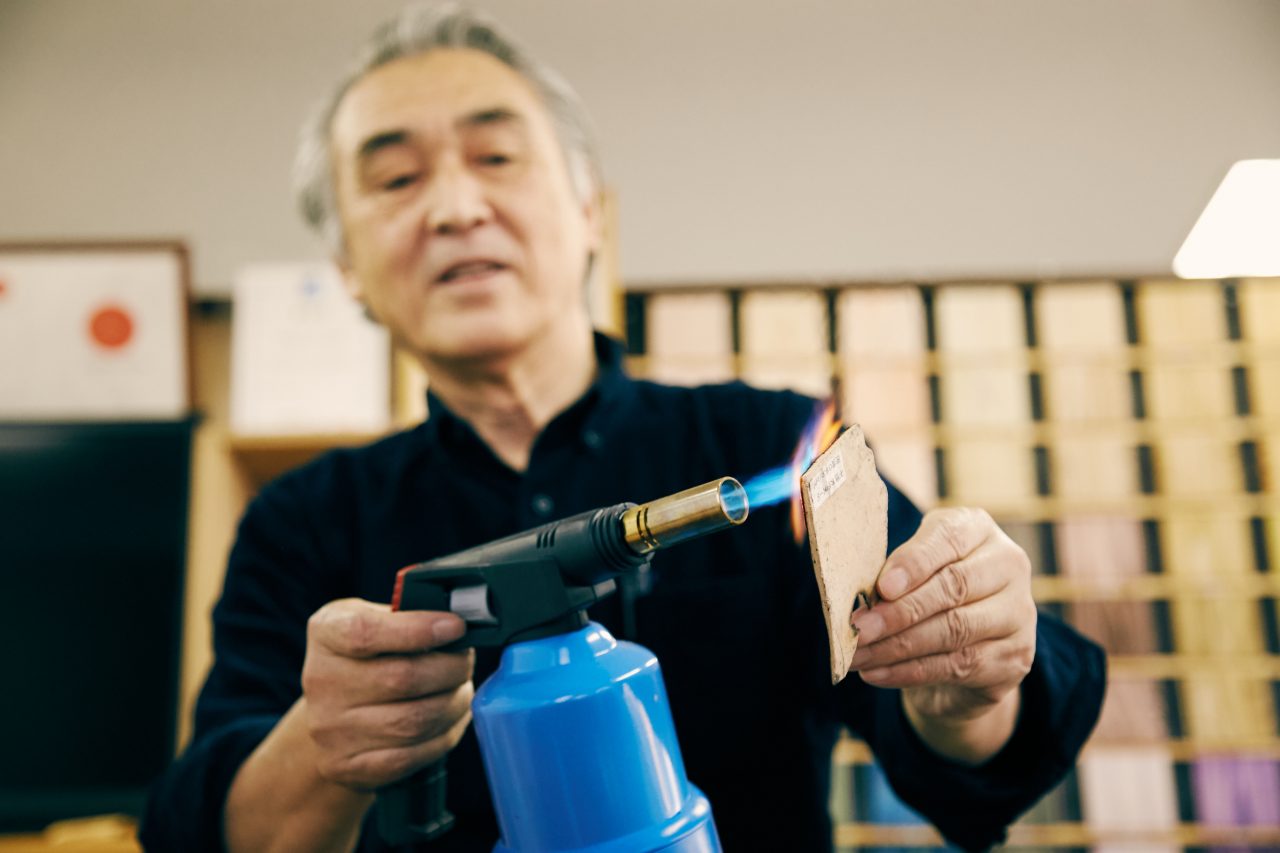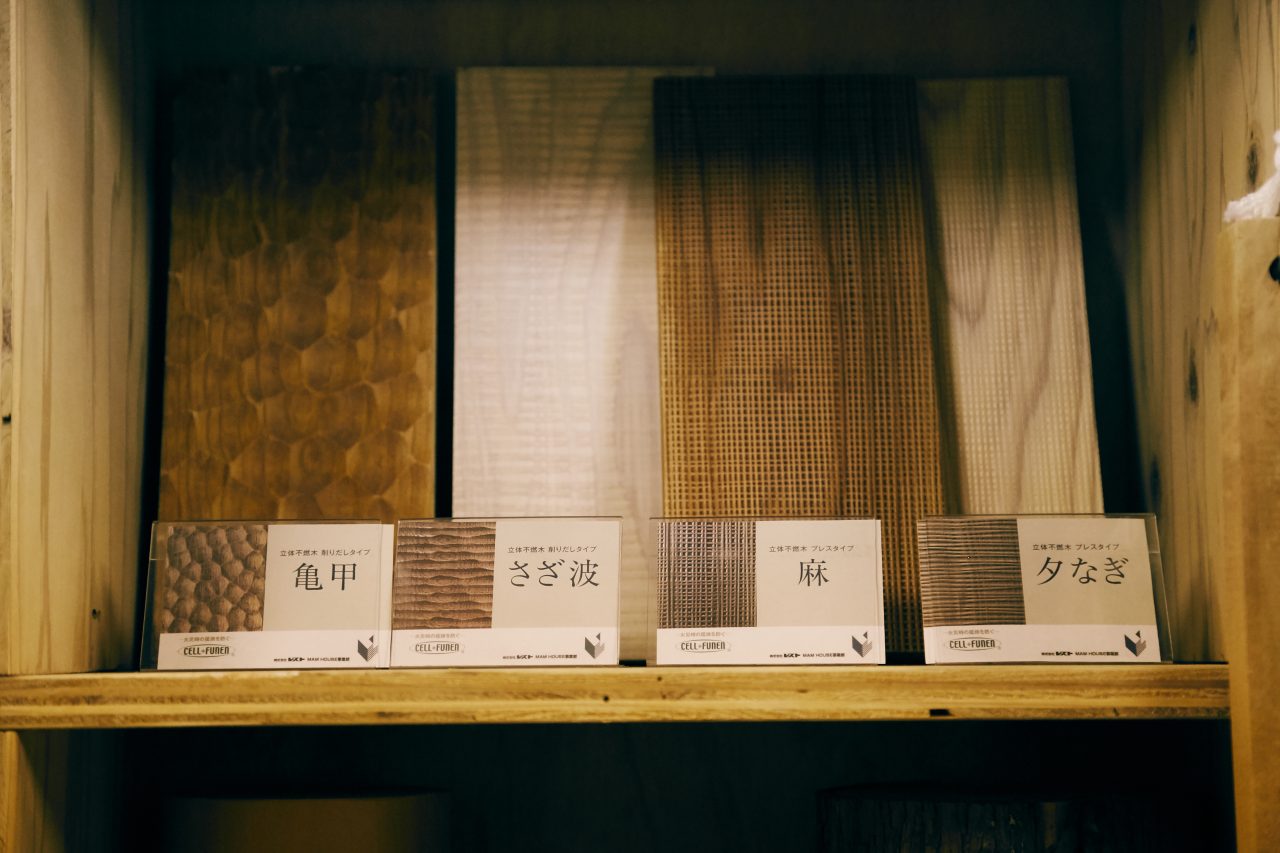Overcoming wood’s weakness with non-combustible technologies
Mr. Asano was originally an interior designer, working at the forefront of the architectural world. However, losing his wooden house to a fire when he was 45 years of age was a shock to him. In his own words, “Even though I was aware that wood could burn, it wasn’t easy to simply accept that my wooden home had burned down.” It was at this point that he started working on the development of non-combustible wood, believing that it could become an invaluable resource if only he could create timber that neither burned nor rotted thus overcoming its weaknesses as a material.
The non-combustible technology can also be applied to textiles and Japanese paper
The non-combustible wood developed by the company in 2001 does not catch fire nor emit toxic gases even when exposed to flames. In addition to this, the wood can be recycled and suppresses combustion-related CO2 emission. Their very own non-combustible technology can be applied to walls, textiles, Japanese paper, urethane foam and various other materials, thus contributing to the creation of disaster-resistant homes.






